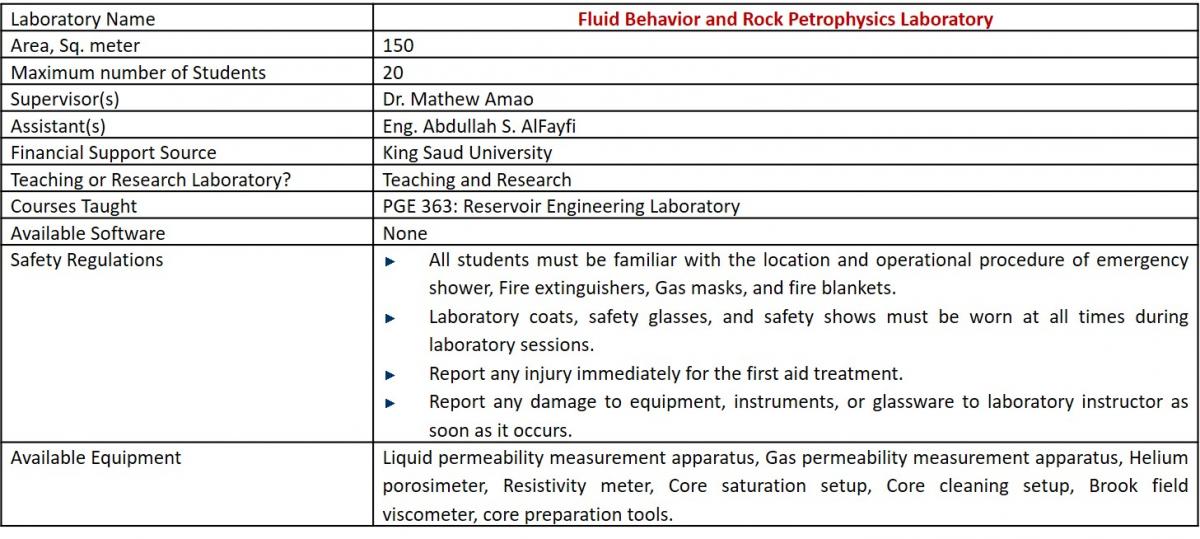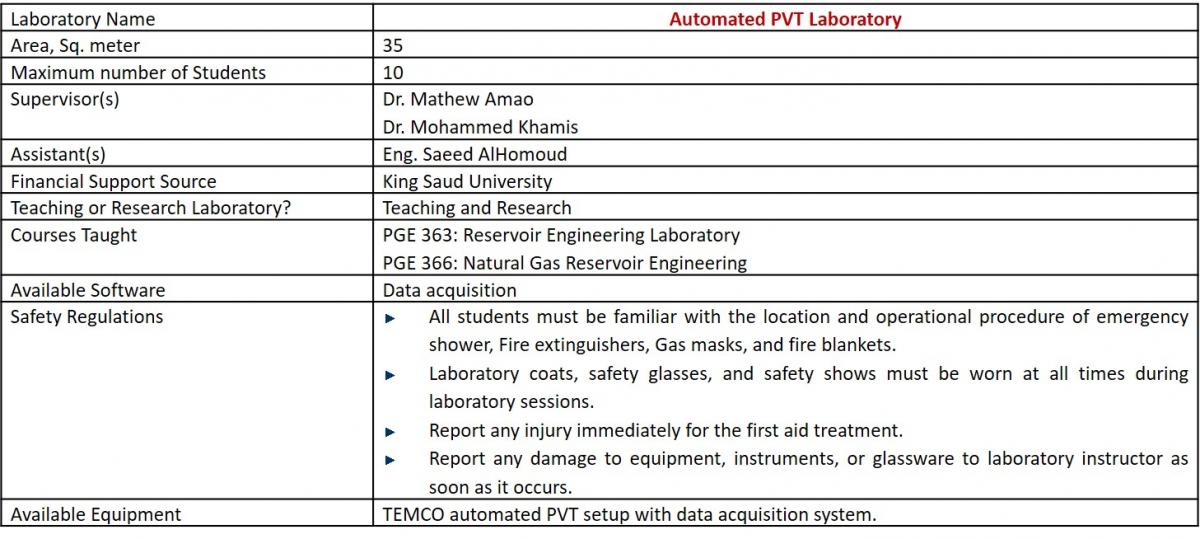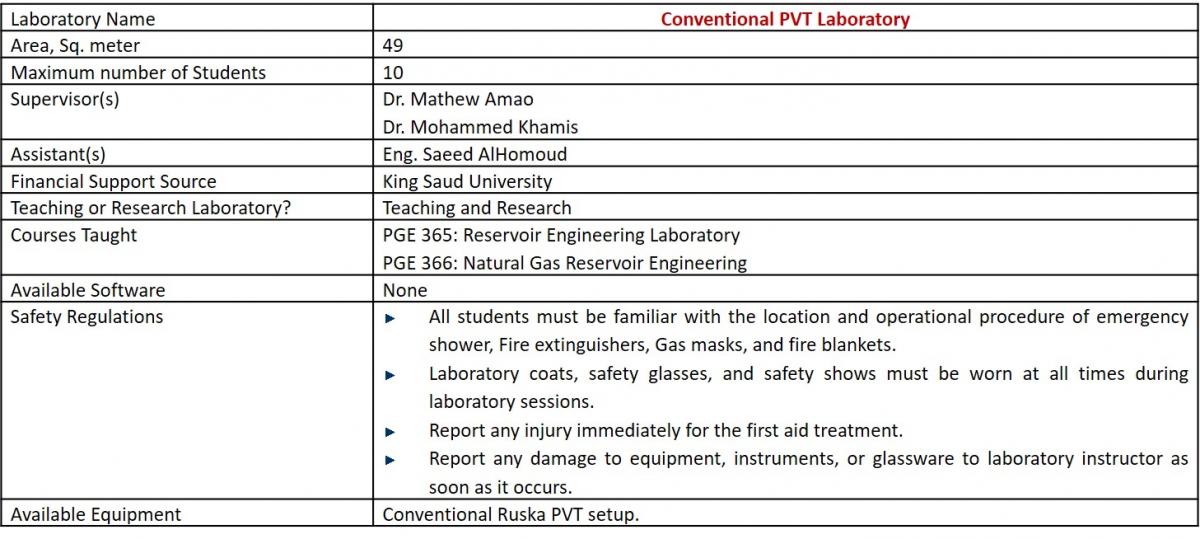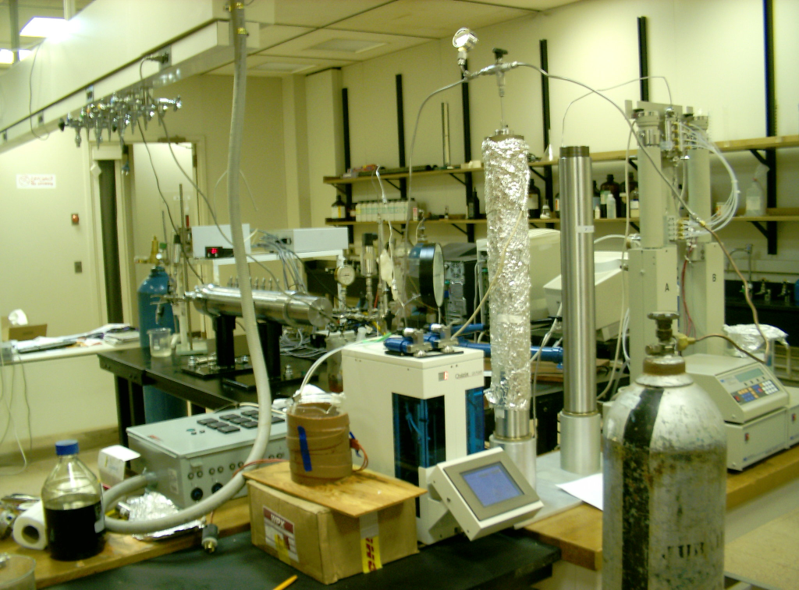Fluid Behaviour and Rock Petrophysics Laboratory
Fluid Behaviour and Rock Petrophysics Laboratory
Due to the possible change of H-C from one oilfield to another, it is very important for petroleum engineers to know about crude oil produced from different types of reservoirs. In addition, finding out about the pressure-volume-temperature behaviour of crude oil of one reservoir unit is essential. In the department laboratory, among processes, which can be achieved in that way, is the set up of similar temperature and pressure found in oil and gas reservoirs. Experimental work on that way allows students to understand the behaviour of fluids found within an H-C reservoir versus temperature and pressure. The same laboratory has got the mission to determine certain rock characteristics, since accumulation of hydrocarbon is found within rock reservoirs. Depending on the types of rocks, reserves and production are estimated. Similar assessments will allow us to predict whether the volume intended is of an economical profit by making exploitation or the contrary. In addition, in this laboratory, measurements of rock properties are currently considered. Among properties, which can be defined are: Porosity by saturation method and helium porosimeter, permeability by liquid and gas methods, fluid saturations by extraction and retort methods, capillary pressure by porous plate and mercury injection methods, electrical properties grain size and pore size distribution.




